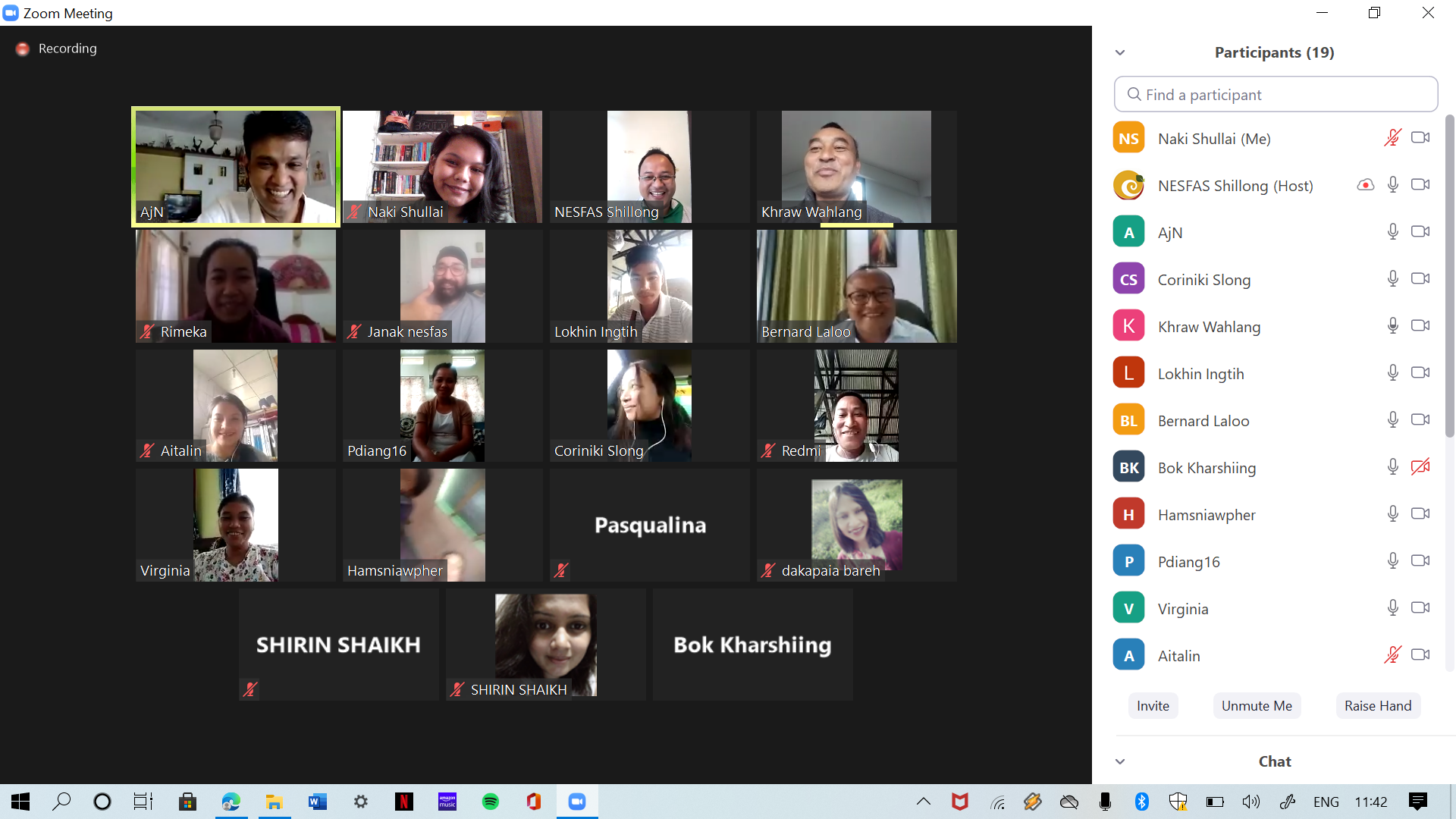The North East Slow Food and Agrobiodiversity Society (NESFAS) team on Thursday (September 17, 2020) held an online workshop to ideate on how learnings from old traditional housing designs can be integrated with new lessons from construction technology. This, in turn, will help community members from different communities learn from each other and improve their knowledge and retain skills. The project is part of the organisation’s three-year initiative — ‘No One Shall Be Left Behind’ — funded by the Rural Electrification Corporation (REC).
The workshop brought together a total of 19 attendees from NESFAS’ partner organizations Social Service Centre (SSC) and the Society for Urban and Rural Empowerment (SURE) along with NESFAS senior associates to discuss the way forward in planting ideas from contemporary housing designs with knowledge from custodians of rural communities.
Pius Ranee, Executive Director of NESFAS, said, “SSC (Ri Bhoi) has identified eight elders and West Jaintia Hills have identified four elderly households for this upcoming project.” He added, “The parameters to preserve traditional knowledge and skills will be lost forever if we do not start now. Let us build a capacity to use these eco-friendly alternatives and bring forward the connection between mother earth and the elderly community members.”
Architect Ajay Nayak, NESFAS consultant – communications and habitat from Mumbai, drew plans for shifting the vulnerable elders to safety houses. He emphasized that community members should apply the knowledge that thet have learnt from the elders and allow the elders’ efforts on traditional skills to be used and pave way to use these in future plans. “We need to see how these small projects play out as opportunities to strengthen new technology with timeless knowledge. We need to engage our elderly knowledge custodians in our activities and while doing so, plant the seeds of ideas in the community to innovate in simple small ways. All this while not destroying the earth,” Nayak added.
The same approach was also used in other REC-funded projects that gave room for traditional knowledge holders to share their insights on improving the land, soil and farming. In the same way, it could also be used in improving building structures, by taking the strengths of traditional knowledge with new technologies. (Visit www.nesfas.in for more details).
Remika Ranee, a consultant architect of NESFAS, had recently taken the opportunity to work with the local communities to understand the construction of community housing and their green alternatives. She reflected on the difference between micro-level housing and larger-scale housing of Meghalaya where each region differs from the other bringing in the contrasting materials of renewable resources used. She explained that traditional architecture used materials like bamboo, thatch, mud/clay, wood, lime. She said, “The origin of this type of architecture is highly dependent on the climate, availability of materials, seismic properties and knowledge of construction which is passed down from generation to generation through practical demonstrations. We have now started documenting the processes and traditional techniques but they are also fast disappearing.”
Shirin Shaikh, an Urban Designer from Mumbai and another resource person at the workshop, presented documentation on bamboo and its applicability to different construction material. She shed light on the different ways’ bamboo can be used as a simple construction material where the same design can be reform by using bamboo. She also shared on how bamboo can be adaptable in the future and provide sufficient airflow to let the housing breathe. She concludes, “Bamboo has great resilience, can be used for a larger span of structures and can be incorporated with modern materials as well.”
The workshop proceeded with an interactive session between the attendees and the resources persons to learn more about the queries and problems of the local communities, where Lokhin Ingtih of SSC raised concerns of the cost and time that will be involved in making bamboo houses. “However, when we learn, train, and exchange knowledge the skill will become better and will also enhance local skills in solving these problems,” he said.
At the end of the workshop, the team concluded with understanding the strengths and weaknesses of bamboo in placing its versatility of constructing it with modern materials to reduce cost, reduce impact, increase ventilation, and to revive this green alternative to the communities in the steps to the way forward.
 Translate
Translate






